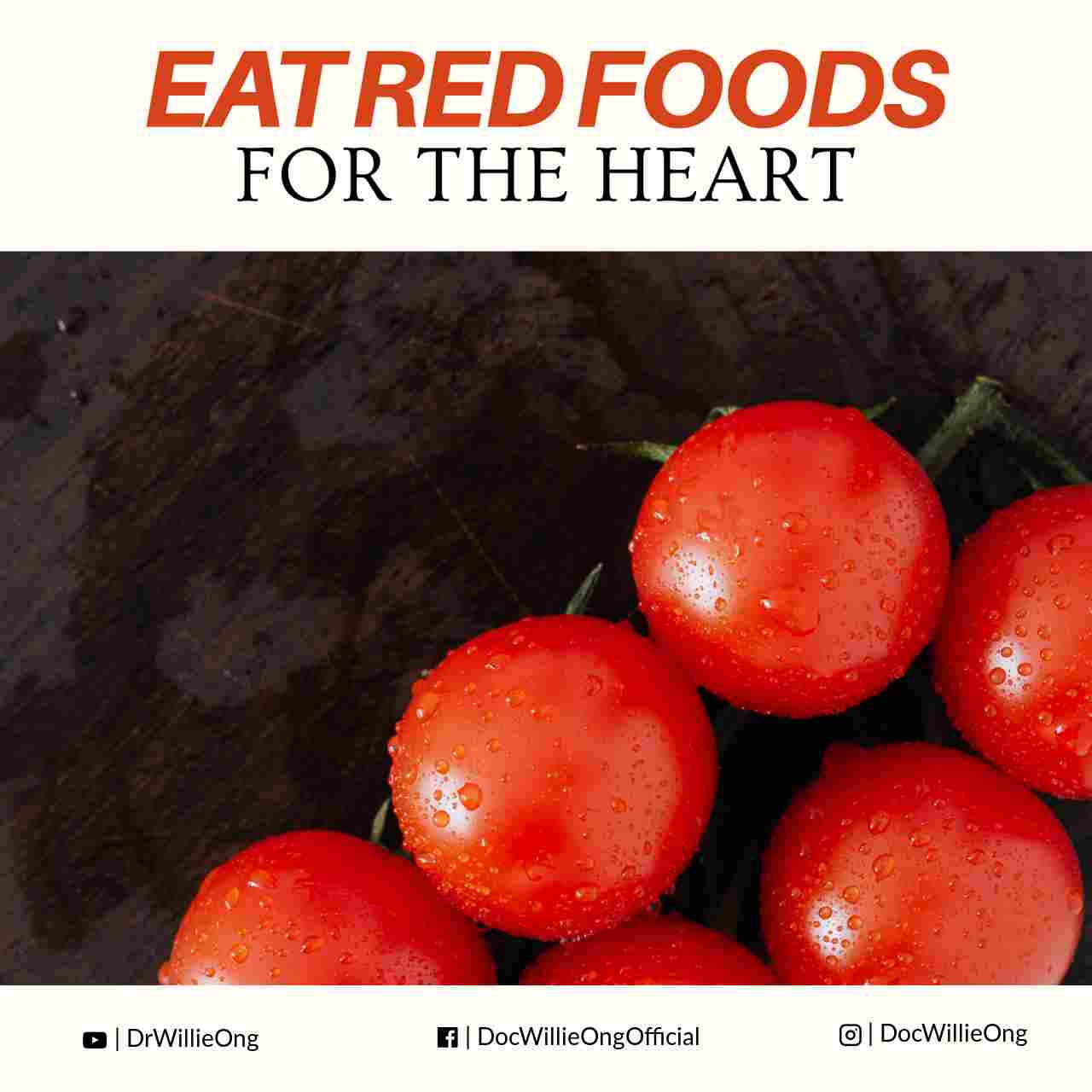Dr. Willie T. Ong (Internist-Cardiologist)
Are you worried about your heart? Don’t feel blue. Go red, and eat red foods for your heart.
This novel idea comes from the American Heart Association, which advocates that men and women eat red-colored foods to protect their hearts. However, America’s short list of red foods includes cherries and pomegranates, which are such rarities here in the Philippines.
Check out our list of affordable, attractive and locally available red-colored foods.
Red apples
Apples are rich in quercetins, a substance known to protect against Alzheimer’s disease and many cancers. Studies show that people who eat an apple a day have lower chances of getting lung cancer and Alzheimer’s disease when compared to non-fruit eaters. Even smokers who often eat apples can somehow minimize the risk of getting cancer.
Apple skins contain pectin, which some studies show can lower bad cholesterol by as much as 16%. Apples may also prevent diabetes and childhood asthma. Eating the fiber-rich skin of the apple also has additional health benefits of having better-looking skin, more regular bowel movement and lower risk for colon cancer.
Red watermelon
According to the U.S. Department of Agriculture, watermelon may be beneficial for the heart and blood vessels. Researchers report that eating watermelons increases our body’s arginine levels, an important amino acid. Arginine is a component needed to produce nitric oxide, a substance that relaxes the blood vessels, improves blood flow and may protect us from a heart attack and stroke.
The deep-red watermelon variety contains the pigment lycopene, which may help prevent cancer and slow down aging. Lycopene helps counter the bad effects of free radicals circulating in the body, which causes our bodies to age.
Red grapes
Red grapes contain extremely beneficial compounds, such as your flavonoids, quercetin, and resveratol (found in red grape skin). Grapes also have lots of potassium, vitamin C, and the B vitamins. Some studies show that grapes can help boost your good cholesterol (HDL cholesterol) and prevent blood platelets from clumping together and forming a deadly blood clot.
Experts believe that the red and black varieties of grapes are more beneficial than the white and green varieties. Red grapes, in particular, have been found to have anti-viral and anti-bacterial properties when tested in the lab.
Don’t eat too much grapes though, because they can pack in the calories. One serving of grapes is equivalent to around 12 pieces only, which is the recommended amount you can eat per meal.
Tomatoes, tomato sauce and ketchup
Tomatoes are rich in antioxidants, especially carotenoids like lycopene and beta-carotene. Some experts believe that lycopene is the most powerful antioxidant among the carotenoids. It’s also the secret ingredient that gives fruits and vegetables the orange-red color.
Several studies have shown that eating tomato-based products is associated with a lower risk of prostate cancer, heart problems and diseases of the digestive tract. Since lycopene is not produced by our bodies, we should get this by eating lycopene-rich foods.
To bring out and absorb more of the lycopene, it is best to cook tomato products in a little oil, as compared to eating it raw. Cooked tomatoes such as tomato paste, tomato sauce and spaghetti sauce are best.
Tomatoes are likewise valuable sources of vitamin C, E and potassium too. Add tomatoes to your salad. Choose red spaghetti sauce instead of white sauce. Add extra catsup to your sandwich.
Strawberries
Strawberries, blueberries and cranberries are extremely healthy foods. They contain substances called ellagic acid and polyphenols, which may help protect against cancer.
Strawberries are packed in anti-oxidants, vitamin B’s, vitamin C, vitamin K, minerals, potassium (good for the heart) and folate (good for the blood).
Strawberries are quite low in calories, unless you submerge it in a pool of condensed milk. Fresh berries are best.
Red wine
Aside from its alcohol content (which is really not beneficial), red wine also contains resveratrol and phytochemicals. As mentioned, these are the healthy substances found in red grapes, which can boost your good cholesterol and lower bad cholesterol. Moreover, many of the plant chemicals found in the grape skins (used for making red wine) may also prevent cancer.
The key to drinking wine, of course, is moderation. Drink no more than half a glass of wine per day, especially for women. A word of warning: If you have a history of alcoholism in the family, or if you’re diabetic or pregnant, I would advise you to avoid red wine and just eat grapes instead.
More Healthy “Reddish” Foods:
Although not exactly red, here are four more healthy foods you can take: (1) Pinkish-red grapefruits can help lower cholesterol and are excellent diet foods; (2) Orange-red salmon are rich in Omega-3 fatty acids and are proven to be good for your heart; (3) Red onions may be irritating to the stomach but can also help lower cholesterol; and (4) Red-purple cabbage contains lots of fiber to help in the bowel movement.
Remember, if you want a healthy heart and body, choose red-colored foods.



